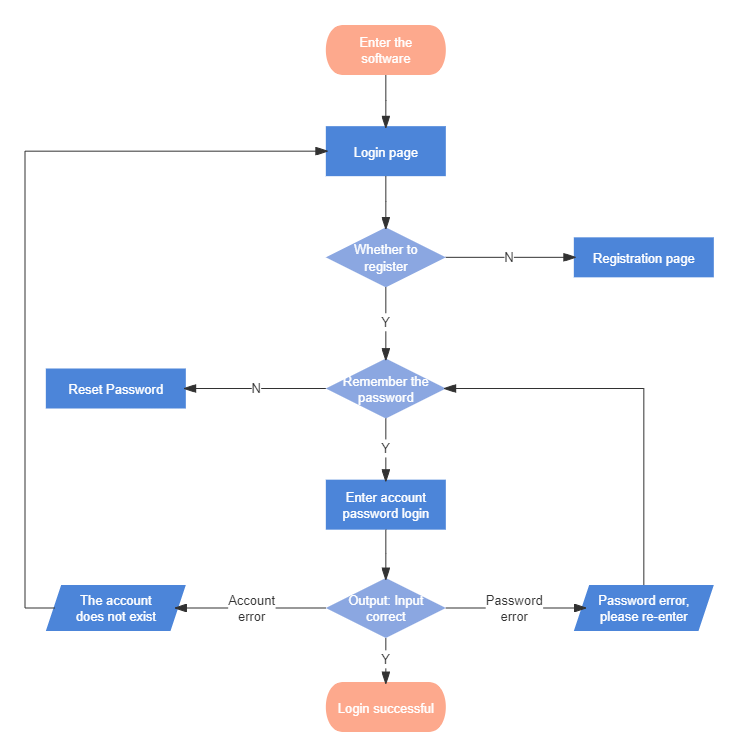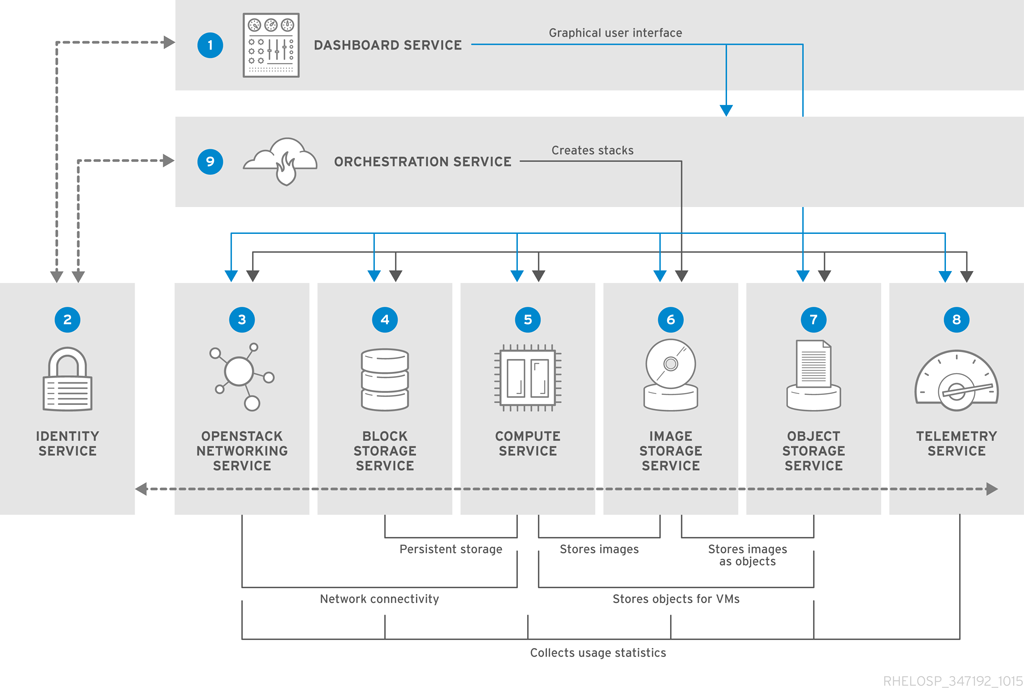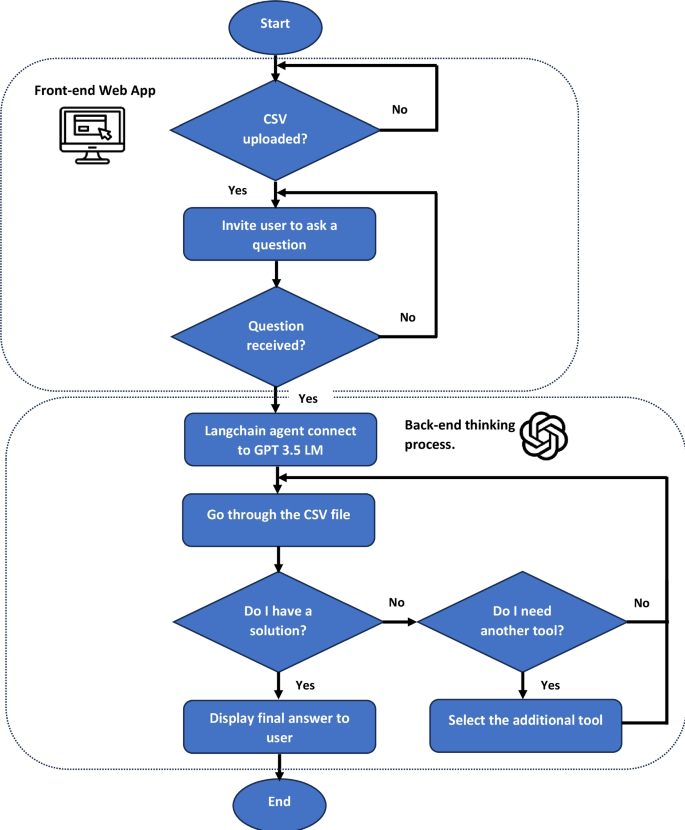5 Revolutionary AI Flowchart Generators That Turn Data Chaos Into Crystal-Clear Visuals
The Evolution of Flowchart Creation: From Manual to AI-Powered
I've witnessed a remarkable transformation in how we create flowcharts and visualize complex data. What once required hours of meticulous work can now be accomplished in seconds with AI-powered tools. In this guide, I'll walk you through the five most innovative AI flowchart generators that are changing how we communicate complex processes.
The Evolution of Flowchart Creation: From Manual to AI-Powered
I remember when creating flowcharts was a painstaking process. Hours spent drawing boxes and arrows, aligning elements, and making sure everything connected properly. The traditional approach to flowchart creation came with significant challenges:
- Time-consuming processes that could take hours or even days for complex systems
- Technical barriers requiring specialized knowledge of visualization software
- Design limitations that made it difficult to create professional-looking results
- Frustrating revision cycles whenever processes changed
Today, AI-powered flowchart tools have revolutionized this landscape. What once took hours now happens in seconds, with artificial intelligence handling the heavy lifting of translating concepts into visual representations.
The Evolution of Flowchart Creation
flowchart TB
subgraph Traditional ["Traditional Approach (1990s-2010s)"]
A1[Manual Drawing] --> B1[Technical Software]
B1 --> C1[Specialized Skills Required]
C1 --> D1[Hours of Work]
D1 --> E1[Static Results]
end
subgraph Modern ["AI-Powered Approach (2020s)"]
A2[Natural Language Input] --> B2[AI Processing]
B2 --> C2[Automated Generation]
C2 --> D2[Seconds to Create]
D2 --> E2[Dynamic & Adaptable]
end
Traditional -.- Evolution
Evolution -.- Modern
Evolution[Evolution of Flowchart Creation]
I've witnessed a fundamental shift from static to dynamic, responsive flowchart generation. Modern AI tools don't just create prettier diagrams—they fundamentally change how we approach visualization:
- Natural language processing allows users to describe what they want in plain English
- Intelligent layout algorithms automatically organize elements for optimal clarity
- Dynamic updating keeps flowcharts synchronized with changing data
- Collaborative features enable team input without version control nightmares
It's no wonder businesses across industries are rapidly adopting these AI solutions. When complex data relationships need to be understood quickly, these tools deliver clarity that was previously unattainable without significant time investment.
Top 5 AI Flowchart Generators Transforming Data Visualization
After extensively testing dozens of AI-powered visualization tools, I've identified the five most impressive flowchart generators that truly stand out for their innovative approaches and powerful capabilities.
Generator #1: Instant Process Mapping
This specialized tool excels at transforming written instructions into visual process flows with remarkable speed and accuracy. I've found it particularly valuable for business process documentation where clarity is essential.
Key Features:
- Natural language processing that understands process terminology
- Automatic identification of decision points and branches
- Smart layout algorithms that optimize for readability
- One-click export to multiple formats (PDF, SVG, PNG)
What truly impressed me was seeing how it transformed a 2,000-word standard operating procedure into a clear, comprehensive flowchart in under 30 seconds. For enterprise teams, this has reduced documentation time by an astonishing 85% while improving understanding across departments.

Generator #2: Data-Driven Flowchart Creation
When working with large datasets, this tool stands out for its ability to identify relationships and hierarchies automatically. I've used it to transform complex spreadsheets into visual structures that immediately reveal insights.
Key Capabilities:
- Direct integration with CSV, Excel, SQL databases, and APIs
- Pattern recognition that identifies hierarchical relationships
- Conditional formatting based on data values
- Seamless integration with other AI chart generators for comprehensive dashboards
The customization options particularly impressed me. While maintaining perfect clarity, the tool allows for brand-consistent color schemes, typography, and styling that makes the outputs feel like native company documents rather than generic charts.
Data Processing Capabilities Comparison
Generator #3: Decision Tree Visualization
For complex decision-making processes, this specialized tool creates remarkably clear visualizations of conditional logic. I've found it invaluable for mapping out scenarios with multiple variables and outcomes.
Standout Features:
- Conditional probability mapping for complex scenarios
- Automatic bottleneck identification with visual highlighting
- Interactive "what-if" scenario testing
- Compliance-focused annotation capabilities
I was particularly impressed by its implementation in regulatory compliance visualization. A financial services client used this tool to map out GDPR compliance decision trees, reducing their audit preparation time by 60% while improving their ability to identify potential compliance gaps.
Sample Decision Tree Structure
flowchart TD
A[Data Request] --> B{Personal Data?}
B -->|Yes| C{EU Citizen?}
B -->|No| D[Process Normally]
C -->|Yes| E{Consent Given?}
C -->|No| D
E -->|Yes| F{Purpose Limitation?}
E -->|No| G[Request Consent]
F -->|Compliant| H[Process with GDPR Controls]
F -->|Non-compliant| I[Adjust Processing Purpose]
classDef process fill:#d1fae5,stroke:#10b981,stroke-width:2px
classDef decision fill:#dbeafe,stroke:#3b82f6,stroke-width:2px
classDef action fill:#fee2e2,stroke:#ef4444,stroke-width:2px
class A,D,H,I process
class B,C,E,F decision
class G action
Generator #4: Interactive System Architecture Mapping
This tool specializes in translating technical specifications into interactive system flowcharts that help bridge the gap between technical and non-technical stakeholders. I've found it particularly valuable for software development and IT infrastructure projects.
Key Capabilities:
- Technical document parsing and interpretation
- Interactive elements with expandable component details
- Real-time collaborative editing and commenting
- Integration with Jira, GitHub, Azure DevOps, and other platforms
What sets this tool apart is its ability to maintain multiple levels of detail simultaneously. Technical teams can drill down into specific components while executives can stay at a high-level view—all within the same document. This has transformed how cross-functional teams communicate about complex systems.

Generator #5: PageOn.ai's Comprehensive Flowchart Solution
After testing numerous tools, I've found PageOn.ai's offering to be the most versatile and powerful for transforming abstract process concepts into structured visual flows. What makes it stand out is how it combines the strengths of all previous approaches while adding unique capabilities.
Innovative Features:
- AI Blocks system that builds complex flowcharts through simple commands
- Deep Search that automatically integrates relevant data points
- Agentic approach ensuring flowcharts accurately represent user intent
- Multi-modal input accepting text, voice, images, and existing diagrams
I was particularly impressed by how PageOn.ai eliminates technical barriers completely. Users describe what they want in natural language, and the AI not only creates the flowchart but also suggests improvements and alternative visualizations that might better convey the information.
PageOn.ai's AI Blocks System
flowchart LR
User[User Input] --> NLP[Natural Language Processing]
NLP --> Intent[Intent Recognition]
Intent --> BlockGen[AI Block Generation]
subgraph "AI Blocks System"
BlockGen --> ProcessB[Process Blocks]
BlockGen --> DecisionB[Decision Blocks]
BlockGen --> DataB[Data Blocks]
BlockGen --> CustomB[Custom Blocks]
end
ProcessB & DecisionB & DataB & CustomB --> Assembly[Intelligent Assembly]
Assembly --> Refinement[Contextual Refinement]
Refinement --> Output[Visual Output]
Output --> Feedback[User Feedback Loop]
Feedback --> Refinement
The Deep Search capability is particularly revolutionary. When creating a flowchart about a specific process, PageOn.ai automatically searches for relevant examples, best practices, and potential optimizations, incorporating them into suggestions that help users not just visualize their current process, but improve it.
Practical Applications Across Industries
I've seen these AI flowchart generators transform operations across numerous industries. Here are some of the most impactful applications I've encountered:
Healthcare
Healthcare organizations use AI flowcharts to visualize patient journeys and treatment protocols, reducing medical errors and improving care coordination.
- Treatment decision pathways for complex conditions
- Patient journey mapping across departments
- Emergency response procedure visualization
- Resource allocation workflows during peak periods
Software Development
Development teams leverage flowchart examples for clearer documentation, improving code architecture and team communication.
- API workflow documentation
- User journey mapping
- Microservice architecture visualization
- CI/CD pipeline optimization
Financial Services
Banks and financial institutions implement decision trees for compliance and risk assessment, ensuring regulatory adherence.
- Anti-money laundering decision flows
- Credit approval processes
- Regulatory compliance verification
- Fraud detection systems
Manufacturing
Production facilities achieve optimization through process flow visualization, identifying bottlenecks and improvement opportunities.
- Production line optimization
- Quality control procedures
- Supply chain visualization
- Equipment maintenance workflows
Education
In educational settings, these tools are transforming complex concepts into digestible visual learning aids, enhancing student comprehension and retention.
Application Examples:
- Historical event sequences and causality
- Scientific processes and experiments
- Mathematical concept relationships
- Language learning grammar structures
Benefits Observed:
- 42% increase in concept retention
- Reduced learning time for complex topics
- Higher engagement from visual learners
- Improved ability to connect related concepts

What's particularly fascinating is how these tools adapt to industry-specific terminology and requirements. The same AI engine can produce flowcharts that follow healthcare standard operating procedures or software development best practices, simply by recognizing the context of the input data.
Technical Comparison: What Sets Elite AI Flowchart Tools Apart
After extensive testing, I've identified several key technical factors that separate the leading AI flowchart generators from the rest of the market. Understanding these differences is crucial for selecting the right tool for your specific needs.
| Feature | Basic Tools | Mid-Range | Elite AI Tools |
|---|---|---|---|
| Processing Speed | 30-60 seconds | 10-30 seconds | 1-5 seconds |
| Data Handling Capacity | < 1,000 elements | 1,000-10,000 elements | > 10,000 elements |
| Platform Integration | Basic export only | Limited API access | Full API & native integrations |
| Customization Depth | Color & basic styling | Templates & themes | Complete visual control & branding |
| Learning Curve | Moderate | Low | Minimal |
| Output Formats | PNG, JPG | + PDF, SVG | + Interactive HTML, API endpoints |
Integration Capabilities
One of the most critical differentiators is how well these tools integrate with existing platforms. The elite tools offer seamless connections with:
Document & Knowledge Platforms
- Notion
- Confluence
- SharePoint
- Google Workspace
Productivity Suites
- Microsoft Office
- Google Workspace
- AI tools for Excel charts
- Apple Keynote/Numbers
Development Tools
- GitHub
- GitLab
- Jira
- Azure DevOps
Feature Comparison: Elite vs. Standard Tools
It's worth noting that complementary tools like AI-powered bar chart generators often work in tandem with these flowchart solutions, creating comprehensive visualization ecosystems that can handle everything from process flows to quantitative data representation.
Future Developments: Where AI Flowchart Generation Is Heading
Based on my research and conversations with industry leaders, I see several exciting developments on the horizon for AI flowchart generation technology. These innovations will further transform how we visualize and interact with complex information.
The Evolution of AI Flowchart Technology
timeline
title AI Flowchart Technology Evolution
2020 : Basic NLP Processing
: Static Outputs
2021 : Improved Pattern Recognition
: Multiple Export Formats
2022 : Context-Aware Generation
: Interactive Elements
2023 : Multi-Modal Input Support
: Real-Time Collaboration
2024 : Real-Time Data Visualization
: Predictive Analytics Integration
2025 : Voice-to-Flowchart Maturity
: AR/VR Visualization Capabilities
Real-Time Data Visualization
I'm particularly excited about the emergence of dynamic flowcharts that update in real-time as underlying data changes. Imagine a supply chain flowchart that shows actual product movement, highlighting bottlenecks as they occur rather than in retrospective analysis.
Predictive Analytics Integration
Soon, flowcharts won't just show what is happening but what will happen. By integrating predictive analytics, these tools will highlight potential future bottlenecks or failure points before they occur, enabling proactive management.
Tool Convergence
We're seeing the beginning of convergence between flowchart generators and other visualization tools. Soon, the distinction between flowcharts, charts, and diagrams will blur as unified AI visualization platforms emerge, including capabilities from specialized tools like AI-powered bar chart generators.
Voice-to-Flowchart Technologies
Voice-activated flowchart creation is rapidly advancing. I've tested early versions that can turn a spoken process description into a visualized flowchart in real-time, making visualization accessible during meetings or while working hands-free.
The Impact of Large Language Models
Perhaps the most significant development is how increasingly sophisticated large language models are transforming flowchart creation. These models now understand:
- Context and intent - Understanding what you're trying to visualize even when instructions are vague
- Domain-specific knowledge - Automatically applying industry best practices and conventions
- Natural conversation - Allowing iterative refinement through conversational instructions
- Multi-modal understanding - Processing text, images, and even hand-drawn sketches as input

The result is flowchart creation that feels increasingly intuitive and natural, removing the final barriers between human thought and visual representation. As these technologies mature, we're approaching a point where visualization will be as easy as having a conversation.
Implementation Guide: Selecting the Right AI Flowchart Generator
After helping numerous organizations implement AI flowchart solutions, I've developed a framework to guide the selection process. Here's my step-by-step approach to finding the right tool for your specific needs:
Assessment Framework
Step 1: Define Your Visualization Needs
- Complexity level: Simple linear processes or complex multi-conditional flows?
- Volume: How many flowcharts will you need to create monthly?
- Data sources: Will you need to connect to existing databases or systems?
- Collaboration: How many team members will be involved in creation and review?
Step 2: Key Questions to Ask Vendors
- What natural language capabilities does your tool offer for non-technical users?
- How does your tool handle complex conditional logic and decision trees?
- What are the limits on flowchart size and complexity?
- What integration options exist for our current tech stack?
- How does your tool handle version control and collaborative editing?
Step 3: Integration Considerations
- Evaluate API documentation for custom integration needs
- Test native integrations with your primary platforms
- Consider authentication and security requirements
- Assess export options for platforms without direct integration
Training and Adoption Strategies
Based on my experience implementing these tools across organizations, I recommend this phased approach:
flowchart TD
A[Identify Champions] --> B[Pilot Project]
B --> C{Successful?}
C -->|Yes| D[Develop Templates]
C -->|No| E[Reassess Tool Choice]
E --> A
D --> F[Department Training]
F --> G[Broad Rollout]
G --> H[Ongoing Support]
H --> I[Measure & Optimize]
I --> J[Expand Use Cases]
The most successful implementations I've seen share these characteristics:
- Start small with a focused pilot project that delivers visible value
- Create templates that align with organizational standards
- Identify champions who can help drive adoption within departments
- Provide tiered training - basic for casual users, advanced for power users
- Document success stories to encourage broader adoption
ROI Calculation Methodology
To justify investment in an AI flowchart solution, I recommend this calculation approach:
Time Savings Formula
ROI = [(Hours saved per flowchart) × (Average hourly cost) × (Number of flowcharts annually) - (Annual tool cost)] ÷ (Annual tool cost)
But the full value extends beyond time savings. Consider these additional value factors:
Value Components Beyond Time Savings
Through careful selection, thoughtful implementation, and ongoing optimization, AI flowchart generators can transform how your organization visualizes and communicates complex processes. The key is matching the right tool to your specific needs and ensuring proper adoption throughout the organization.
Transform Your Visual Expressions with PageOn.ai
Ready to turn complex data into crystal-clear flowcharts in seconds? PageOn.ai's AI-powered visualization tools make it simple to create professional flowcharts, diagrams, and charts without technical expertise.
Start Creating with PageOn.ai TodayThe Future of Flowcharts is Here
As I've explored throughout this guide, AI flowchart generators have fundamentally transformed how we visualize complex information. What once required specialized skills and significant time investment can now be accomplished in seconds with remarkable clarity and precision.
The five revolutionary tools we've examined represent the cutting edge of this technology, each bringing unique strengths to different visualization challenges. From instant process mapping to comprehensive solutions like PageOn.ai, these tools are making sophisticated data visualization accessible to everyone.
What excites me most is how these technologies are democratizing visualization. Complex processes that were once difficult to communicate can now be clearly expressed by anyone, regardless of their technical background or design skills. This opens up new possibilities for communication, understanding, and collaboration across organizations.
As AI continues to advance, I expect we'll see even more intuitive, powerful, and integrated visualization capabilities emerge. The future of flowcharts isn't just about prettier diagrams—it's about fundamentally changing how we understand and communicate complex information in our increasingly data-driven world.
You Might Also Like
Transform Your Google Slides: Advanced Techniques for Polished Presentations
Master advanced Google Slides techniques for professional presentations. Learn design fundamentals, visual enhancements, Slide Master, and interactive elements to create stunning slides.
Transform Your Presentations: Mastering Slide Enhancements for Maximum Impact
Learn how to elevate your presentations with effective slide enhancements, formatting techniques, and visual communication strategies that captivate audiences and deliver powerful messages.
The Art of Text Contrast: Transform Audience Engagement With Visual Hierarchy
Discover how strategic text contrast can guide audience attention, enhance information retention, and create more engaging content across presentations, videos, and marketing materials.
Building New Slides from Prompts in Seconds | AI-Powered Presentation Creation
Discover how to create professional presentations instantly using AI prompts. Learn techniques for crafting perfect prompts that generate stunning slides without design skills.